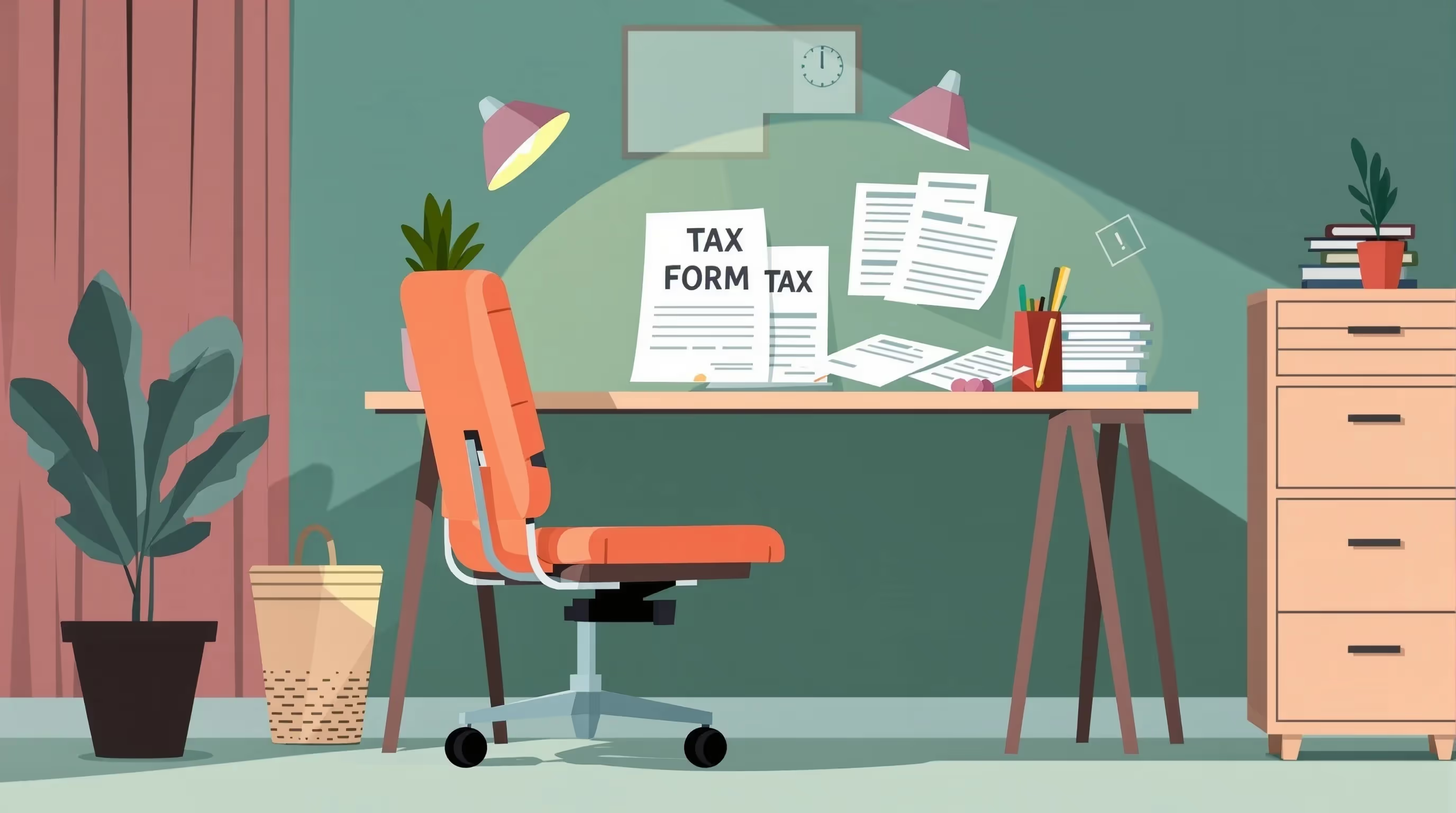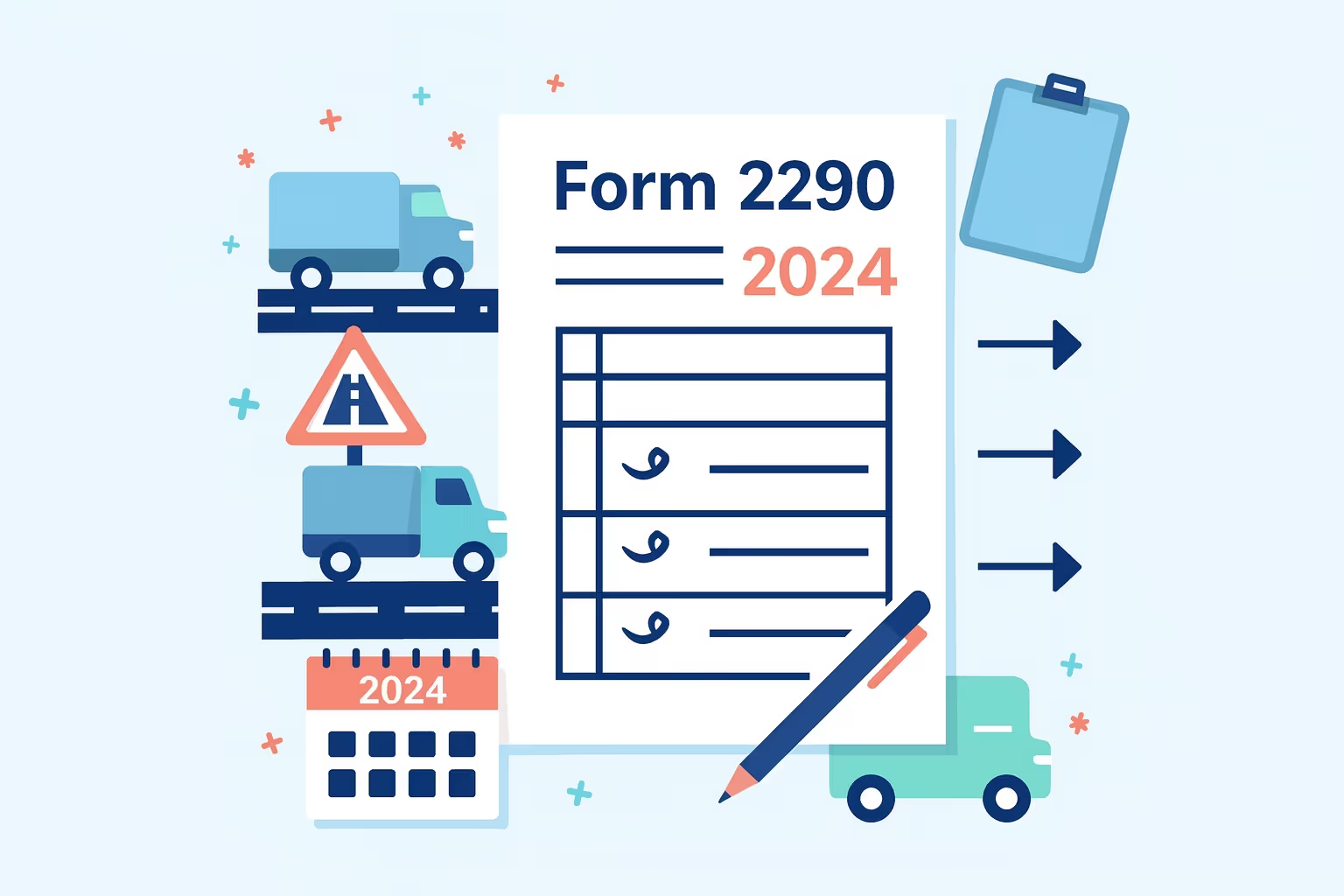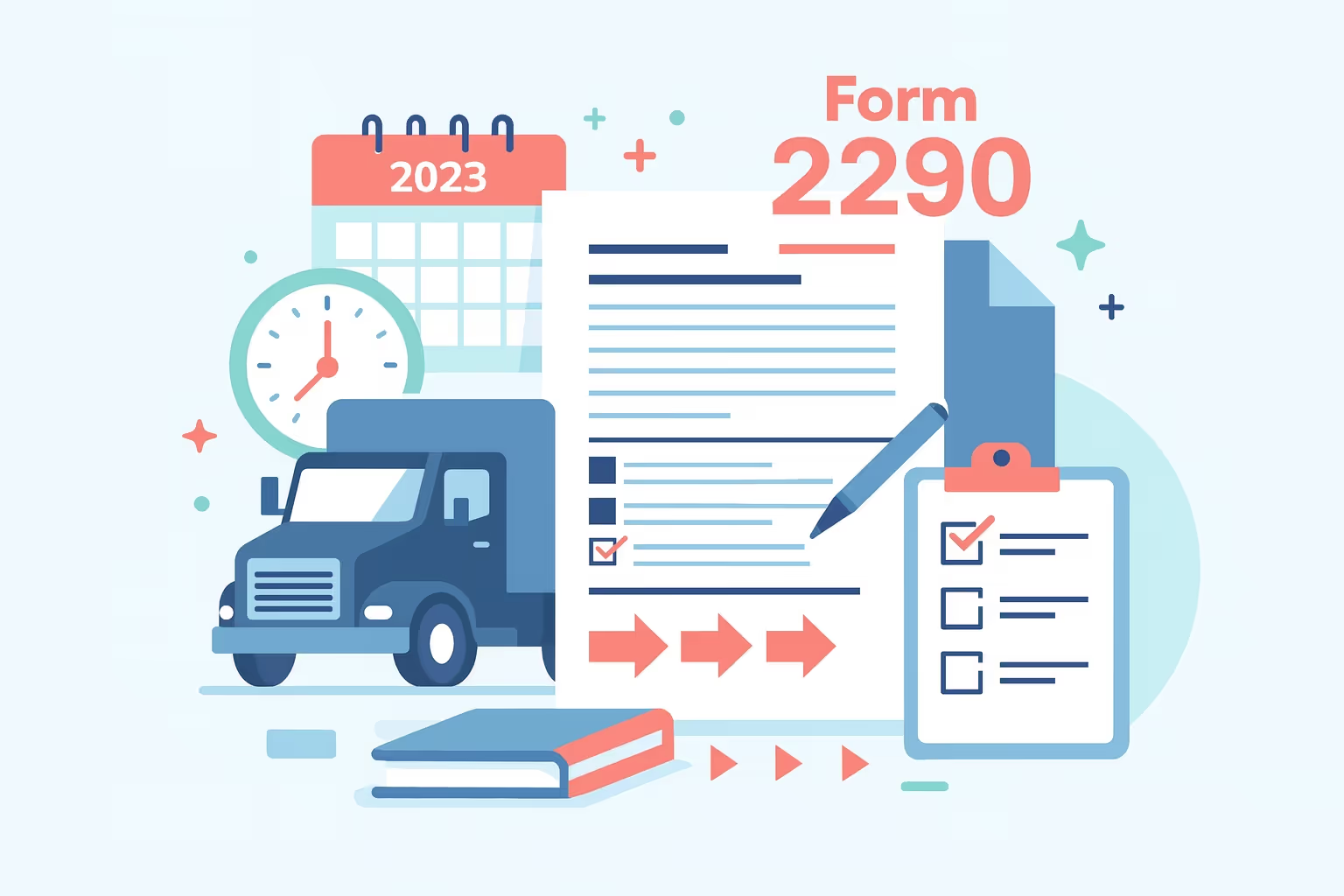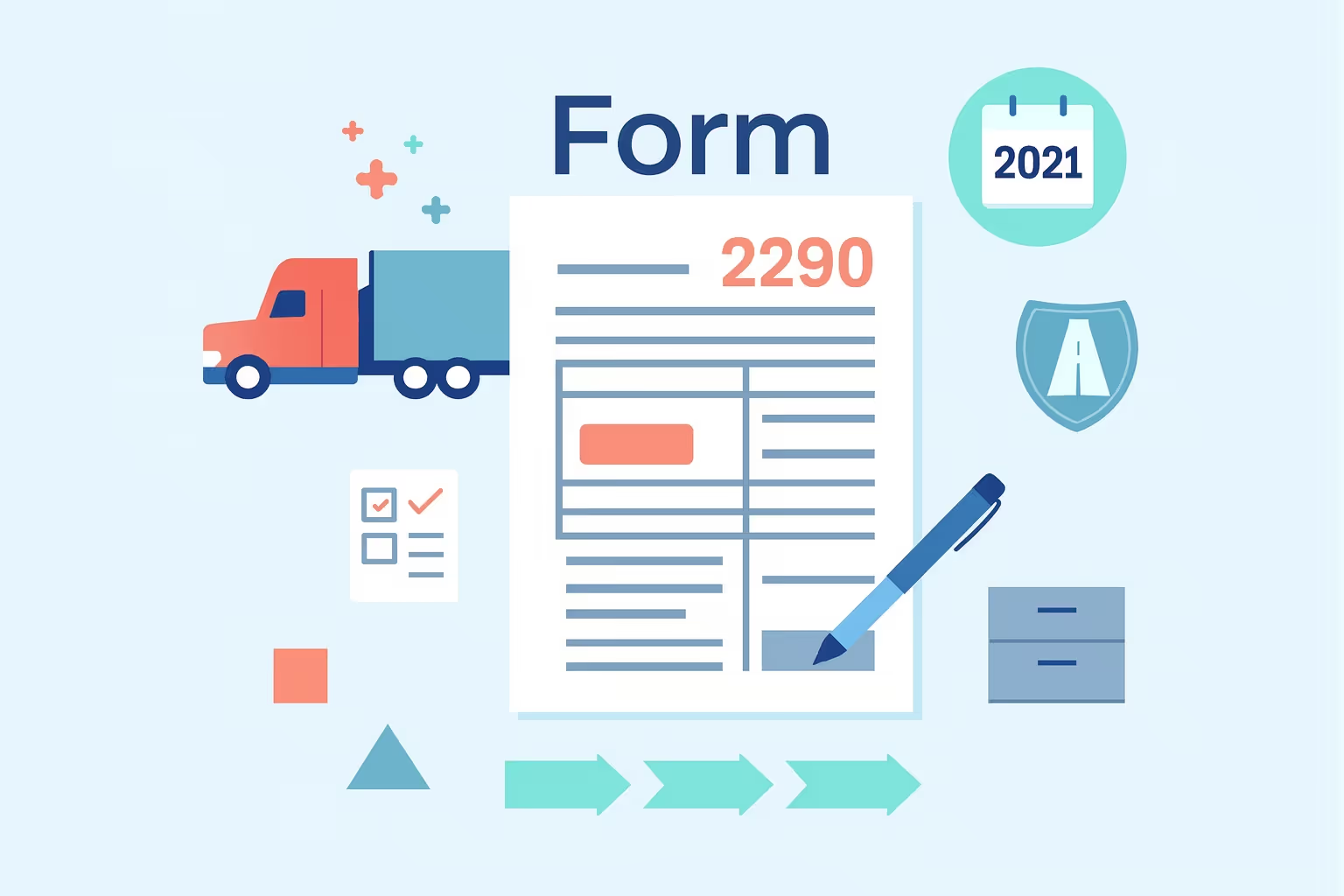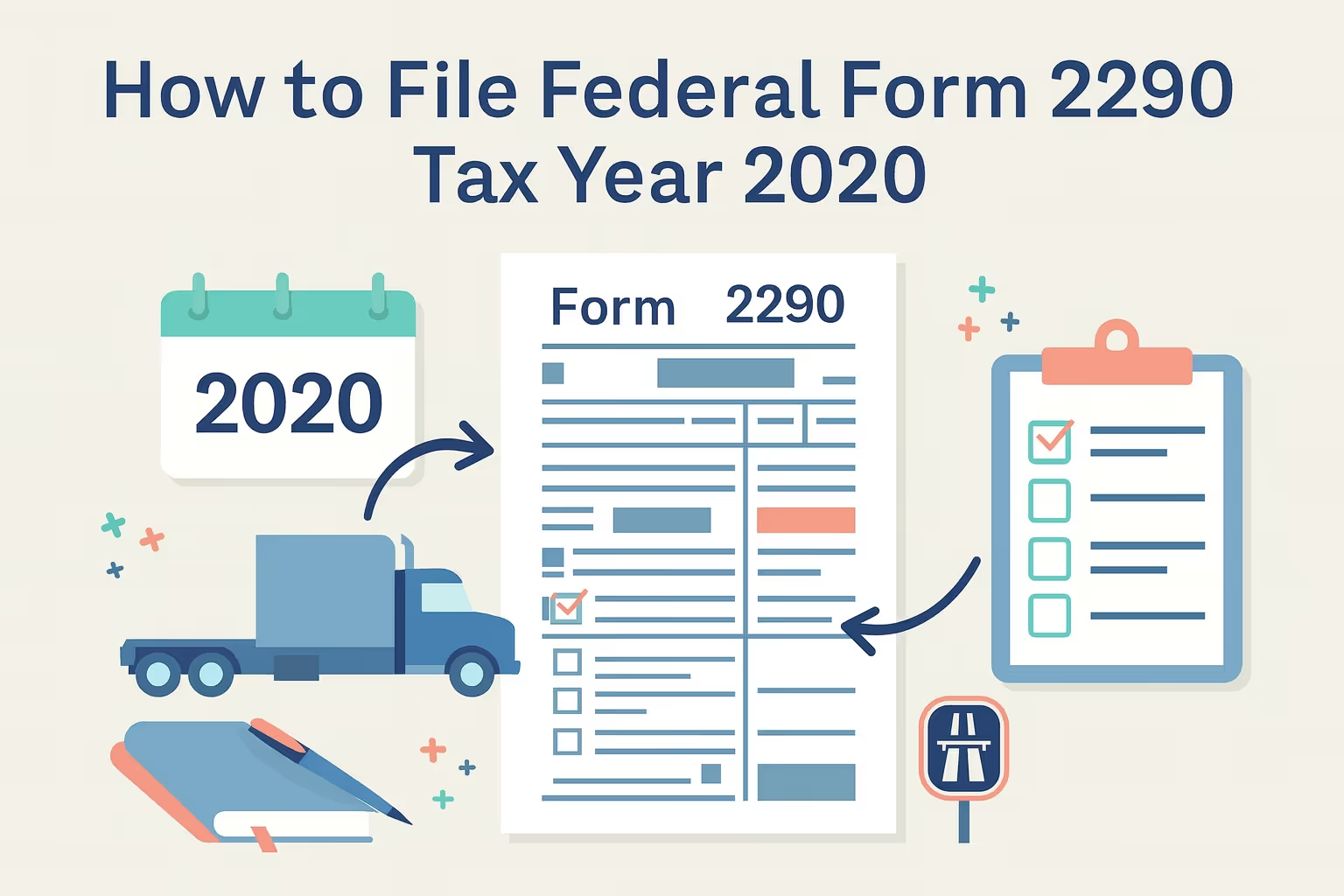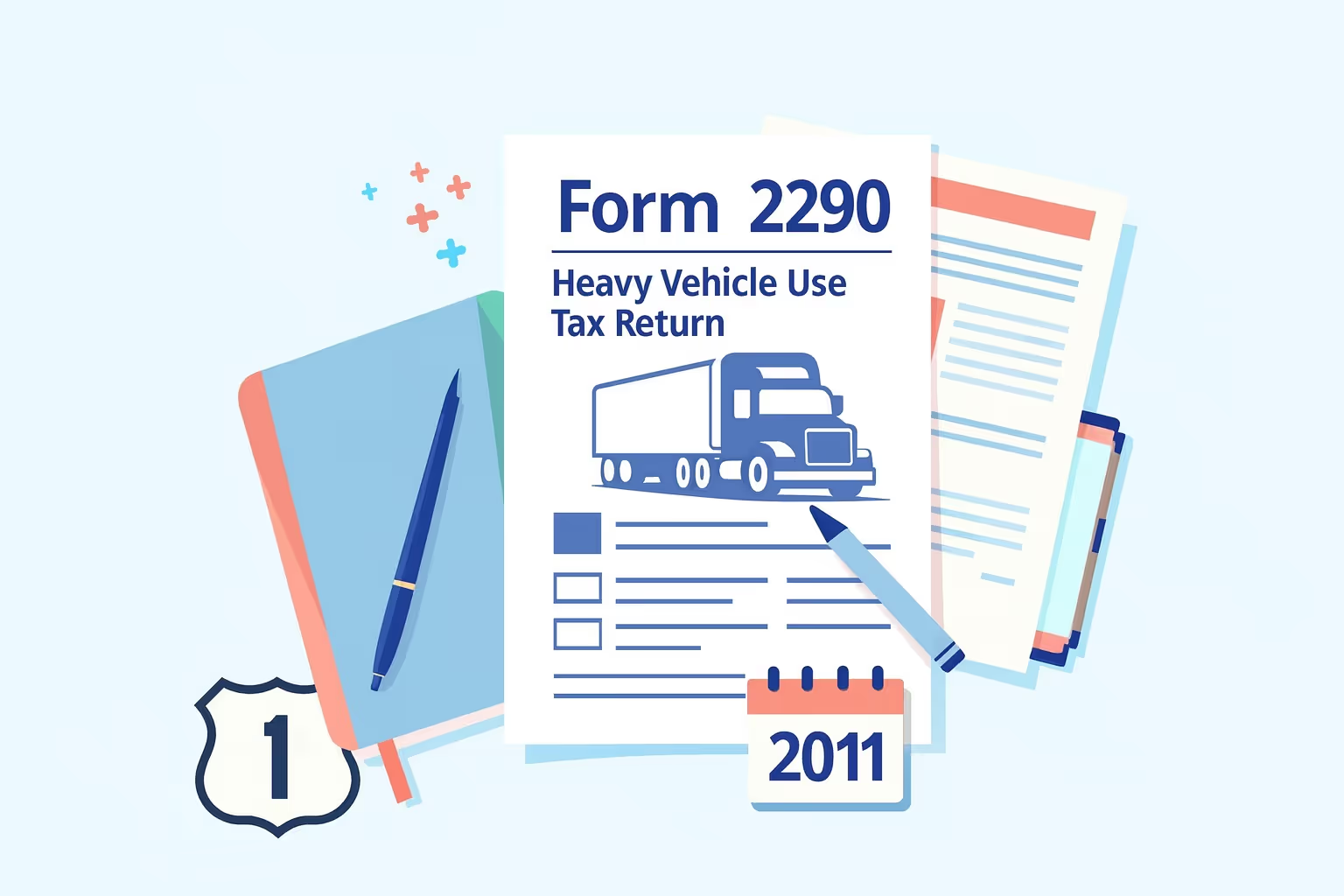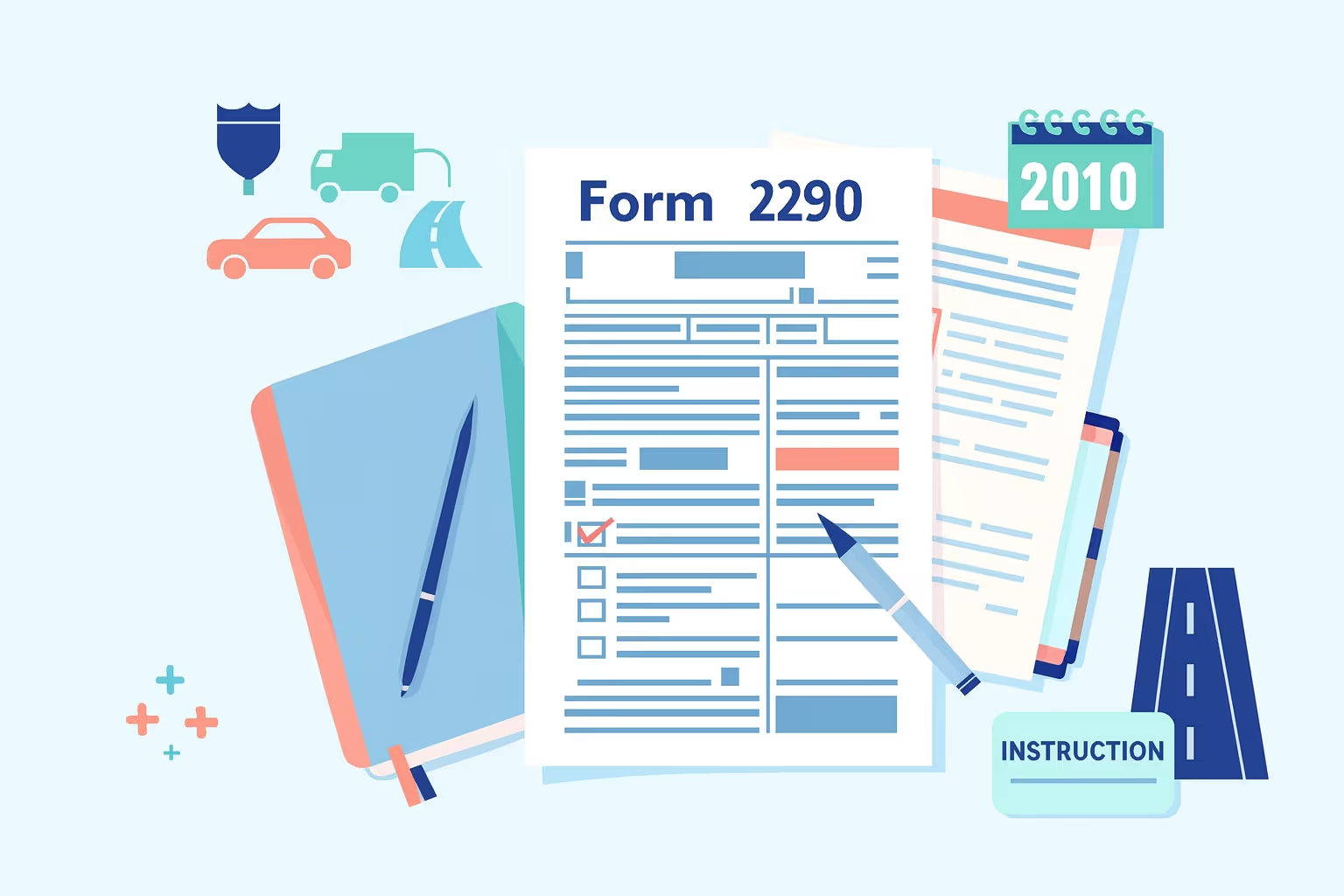How to File Federal Form 2290 for Tax Year 2022
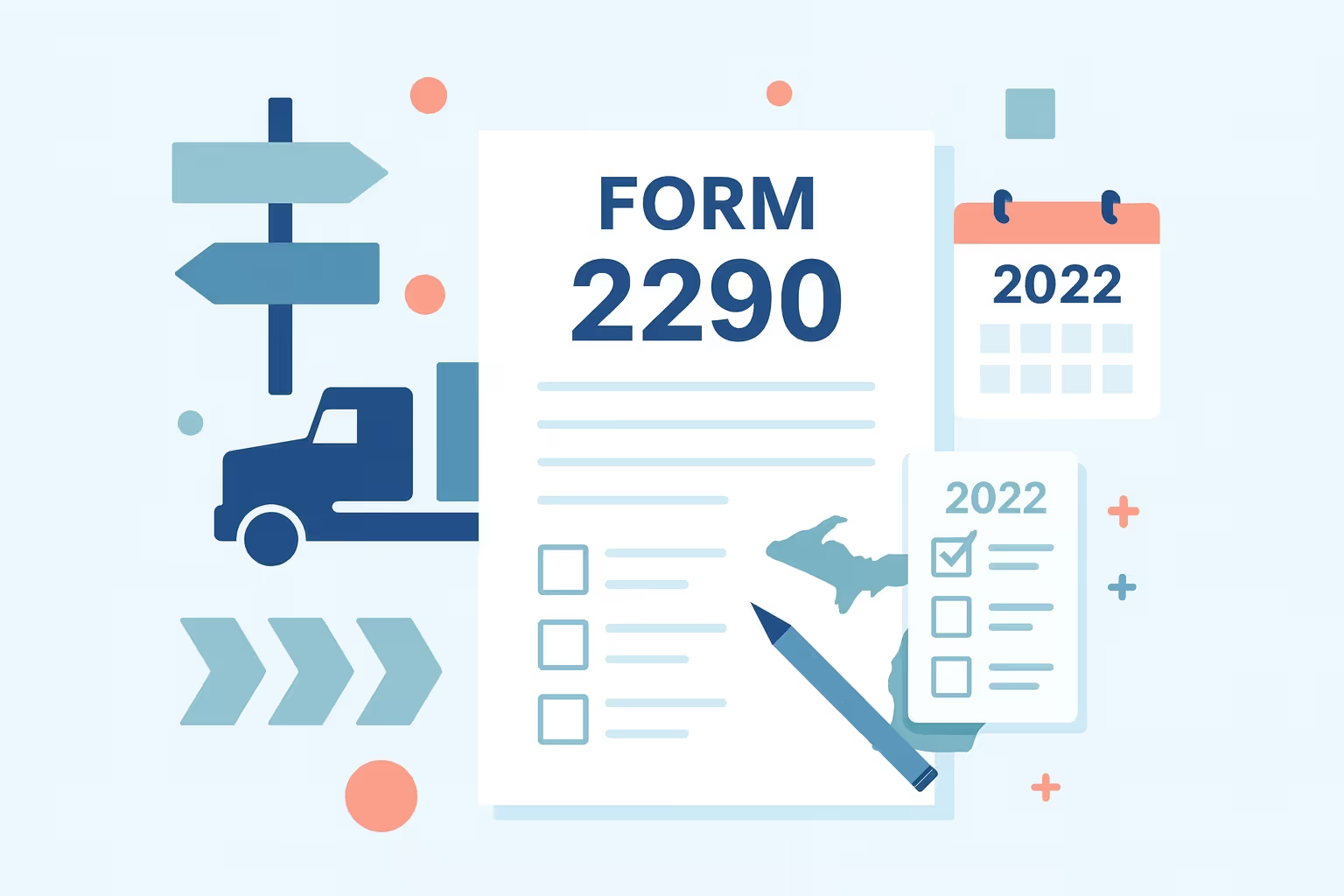
Thousands of truck owners and operators face costly delays and penalties yearly simply because they file their Federal Form 2290 for Tax Year 2022 late or with errors. According to the IRS, paper-filed returns can take weeks to process. At the same time, small mistakes—like entering the wrong Employer Identification Number or taxable gross weight—can trigger rejections and slow down refunds. For many operators, those delays mean lost time, missed renewals, and unnecessary stress.
This tax form, officially known as the Heavy Highway Vehicle Use Tax Return, applies to heavy highway vehicles with a gross taxable weight of 55,000 pounds or more. Filing on time ensures compliance and prevents fines that can quickly climb to 4.5% of the tax due each month. Filing electronically isn’t just a convenience; it’s the most reliable way to receive your stamped Schedule 1, required for vehicle registration and proof of payment on public highways.
This guide will walk you through every step: determining whether your vehicle qualifies, calculating your taxable gross weight, selecting the correct payment method, and ensuring your records match IRS standards. Whether you operate one truck or manage multiple vehicles, filing your Form 2290 correctly and early can protect your business, cash flow, and peace of mind.
What Is Federal Form 2290 for Tax Year 2022
Before you can file correctly, it’s essential to understand what Federal Form 2290 for Tax Year 2022 actually represents. The form—officially titled Heavy Highway Vehicle Use Tax Return—is an IRS form that helps the government collect the heavy vehicle use tax (HVUT) from owners of large trucks and other highway motor vehicles. These funds maintain and repair public highways, ensuring safe and reliable commercial and private transportation roads.
Heavy Highway Vehicle Use Tax: What HVUT Covers
- HVUT applies to taxable vehicles operating on public highways with a gross taxable weight of 55,000 pounds or more. Paying this tax helps fund infrastructure and confirms your compliance with federal law.
- The IRS requires a separate filing for each tax period beginning July 1 and ending June 30. Every tax return must specify the first month of vehicle use to calculate the correct tax amount.
Vehicles and What Counts as Taxable Vehicles
- Trucks, tractors, and buses transporting heavy loads typically meet the taxable gross weight threshold.
- Some agricultural vehicles or off-highway machinery may qualify for special treatment or suspension; the official IRS Form 2290 instructions define these cases.
Who Must File Federal Form 2290 for Tax Year 2022
Not every vehicle owner needs to file, but misunderstanding the rules can lead to penalties or missed refunds. Knowing who is responsible for filing Federal Form 2290 for Tax Year 2022 ensures you stay compliant and avoid unnecessary costs.
Owners, Lessees, and Businesses
- You must file Form 2290 if a heavy highway vehicle with a gross weight of 55,000 pounds or more is registered—or required to be registered—in your name. This rule applies to individuals, corporations, partnerships, and any organization that owns or operates qualifying taxable vehicles.
- When filing, your business details must match the information on your IRS records, including your Employer Identification Number (EIN). Using a Social Security number instead will cause the IRS to reject your return.
First Use Date and the Due Date
- The filing due date depends on when the vehicle was first used on public highways. File by the last day of the month following that date. For example, if your vehicle’s first use was in July, you must file by August 31.
- If the date falls on a weekend or legal holiday, you have until the next business day to submit the form and make your tax payment. Timely filing prevents interest and penalties from accruing.
How to Determine Taxable Gross Weight
Your taxable gross weight determines how much you owe in Heavy Vehicle Use Tax (HVUT). Getting this number right is critical; even a small error can cause IRS mismatches, payment corrections, or late filing notices. The IRS defines taxable gross weight as the combined weight of the vehicle, any attached trailers, and their maximum loads.
Standard Calculation for Trucks and Tractors
- Add the unloaded weight of the truck or tractor, the unloaded weight of any trailers or semitrailers, and the weight of the maximum load usually carried. This total is your gross taxable weight. A vehicle weighing 55,000 pounds or more must have IRS Form 2290 filed for the current tax period.
- Always use verified registration data when determining gross weight. Underreporting to lower your tax amount can result in penalties or amended filings later, while overreporting increases your total unnecessarily.
Exceptional Cases: Buses and Agricultural Vehicles
- For buses, calculate weight by adding the unloaded weight plus 150 pounds per seat for the driver and passengers. This rule aligns with the IRS’s “fully equipped for service” requirement.
- Agricultural vehicles qualify for special mileage limits. If you expect to drive 7,500 miles or less during the tax year, you may list the car as tax suspended under category W to defer the tax payment.
Filing Deadlines in Federal Form 2290 for Tax Year 2022
Missing a filing deadline for your Federal Form 2290 for Tax Year 2022 can quickly lead to penalties, interest charges, and suspended vehicle registrations. The IRS bases each filer’s deadline on the month their vehicle was first used during the current tax period. Understanding this timeline ensures you avoid late fees and stay on the road legally.
Month of First Use Drives Everything
- You must file and pay the HVUT tax by the last day of the month following the vehicle’s first use on public highways. For example, if your first use was in July, you must file by August 31. If your first use was in September, your due date is October 31.
- When a date falls on a Saturday, Sunday, or legal holiday, the IRS automatically extends your due date to the next business day. Remembering these dates avoids unnecessary penalties and reinstatement delays.
Amended Timing When Status Changes
- If a vehicle increases taxable weight or exceeds the mileage use limit during the year, you must file an amended return.
- The amended due date is the last day of the month following the change. Timely updates prevent the IRS from assessing additional tax with interest.
How to E-File Form 2290 Online vs Paper Filing
The IRS gives you two ways to submit your Federal Form 2290 for Tax Year 2022: electronic filing or paper filing. While both options are valid, e-filing is faster, more accurate, and strongly recommended—especially if you manage multiple vehicles or need your stamped Schedule 1 quickly.
Why Most Filers Should Electronically File
- E-filing ensures speed and accuracy. Your return is validated immediately, reducing math and data errors that can delay approval. Most filers receive their Schedule 1 within minutes of IRS acceptance.
- The IRS requires electronic filing if you report and pay tax on 25 or more taxable vehicles. However, tax-suspended vehicles—those under the mileage use limit—do not count toward that threshold.
Why Paper Filing is Still Allowed for Some Filers
- Paper filing works for more minor operations, but comes with a painfully slow paper process. Processing can take up to six weeks, and you must account for mailing time.
- You must also use the correct IRS mailing address and include payment via check or money order if you’re not paying electronically. Errors in mailing or missing attachments can cause your tax return to be rejected.
Comparison 1: E-Filing vs Paper Filing
Processing Time
- E-Filing: Usually within minutes
- Paper Filing: 4–6 weeks
Error Correction
- E-Filing: Automatic validation reduces mistakes
- Paper Filing: Manual correction required, more prone to errors
Payment Options
- E-Filing: EFTPS, Electronic Funds Withdrawal (EFW), debit/credit card
- Paper Filing: Check or money order
Proof of Tax Paid
- E-Filing: Instant Schedule 1 available for download
- Paper Filing: Schedule 1 is mailed by the IRS
Ideal For
- E-Filing: Multiple vehicles, faster processing, and convenient payment options
- Paper Filing: Single vehicle owners or those without internet access
Step-by-Step E-Filing Checklist
- Gather each vehicle identification number (VIN), business details, and identification number. Double-check that these match your IRS records.
- Choose an IRS-approved provider, complete Form 2290 online, select a payment option (such as electronic funds withdrawal), and submit.
- Once accepted, download your stamped Schedule 1 and keep digital and paper copies for registration and compliance.
Payment Methods for Federal Form 2290 for Tax Year 2022
Once you calculate your tax amount, you must pay it using one of the IRS-approved options. Paying correctly and on time is crucial since interest begins the day after your due date if payment is late. Fortunately, the IRS offers several reliable methods to help filers of all sizes meet their HVUT tax obligations.
Electronic Federal Tax Payment System and EFW
- The Electronic Federal Tax Payment System (EFTPS) is a free service that lets you make payments online or by phone. Enrollment can take several business days, so it's best to register early. Once active, EFTPS provides a detailed confirmation number for your IRS records.
- If you electronically file, you can authorize an electronic funds withdrawal (EFW) as part of your submission. This option automatically debits your account on the specified date, ensuring timely payment.
Card and Paper Payments
- Using an approved IRS processor, you can pay with a debit or credit card. Although a small processing fee may apply, it immediately confirms your tax payment.
- Paper filers may send a money order or check payable to the “United States Treasury.” Include your Form 2290-V payment voucher and verify the correct mailing address. Keep copies of all payments and confirmations as proof that you paid the tax within the current period.
Completing IRS Form 2290: Business Details, VINs, and Totals
Accuracy is everything when completing IRS Form 2290. A slight mismatch between your business information and IRS records can lead to rejection, delayed processing, or penalties. Before you begin, ensure every field is complete and consistent across your tax return documents.
Identification and Business Details
- Enter your correct Employer Identification Number (EIN), legal business name, and mailing address. The IRS uses these details to link your tax form to your account; any variation can result in rejected filings.
- Double-check your business details against registration and prior-year filings. If a paid preparer files on your behalf, verify that the preparer’s information is listed accurately before submission.
Vehicle Lines: VINs, Categories, and Total Tax
- Each vehicle identification number (VIN) must be accurate and match your vehicle registration exactly. Using the wrong VIN—even by one digit—can invalidate your stamped Schedule 1.
- Record the gross taxable weight and the month of first use for each vehicle. Calculate the total tax using the appropriate category from the IRS tax tables.
- Review all vehicle entries before filing, especially if you operate multiple vehicles. If a new car is added during the tax year, a separate filing or amendment may be required to report it properly.
Schedule 1 for Federal Form 2290 for Tax Year 2022
Your stamped Schedule 1 is more than just a receipt—it’s the official proof that you’ve paid the Heavy Vehicle Use Tax (HVUT) for the current tax period. Without it, you cannot legally register your vehicle, renew tags, or cross U.S. borders. Every truck operator, whether filing individually or through a service provider, must keep this document safe and legible.
Why Schedule 1 Matters
- The IRS issues your stamped Schedule 1 after accepting Federal Form 2290 for Tax Year 2022. This document proves you’ve met your legal obligation to pay taxes on your heavy highway vehicle.
- You must present Schedule 1 to your state DMV or port-of-entry officials as evidence of tax paid. Missing or damaged copies can delay registration or lead to compliance holds.
Getting and Using Your Stamped Schedule
- E-filers receive their stamped Schedule 1 within minutes. Always print it clearly and store both digital and paper versions.
- Paper filers should expect several weeks before receiving their stamped copy. Verify all vehicle identification numbers and categories match your tax return before submission.
- Keep the Schedule 1 in your records and vehicle cab. If your stamped schedule becomes unreadable, contact your e-file provider or the IRS support team for reissue. Proper handling of this document safeguards your operations year-round.
Suspended Vehicle and Mileage Use Limit: Low-Mileage Rules
If your heavy truck rarely operates on public highways, you might not owe any heavy vehicle use tax—but you must still file to claim suspension. The IRS calls this a “suspended vehicle” status, and it helps qualified operators legally defer their tax payment.
Claiming Suspension Properly
- You can mark a vehicle as suspended if it is expected to travel 5,000 miles or less during the tax year, or 7,500 miles or less if it’s an agricultural vehicle. These vehicles are classified as tax-suspended under category W on Schedule 1.
- You must still file Form 2290 even when no tax amount is due. The IRS requires the return for tracking purposes. Keep detailed mileage logs and odometer readings to verify that your usage meets the mileage use limit.
When Mileage Limits Are Exceeded
- You must file an amended return immediately if a suspended vehicle exceeds its mileage threshold.
- Check the “Amended Return” box, calculate the additional tax, and pay it by the last day of the month after exceeding the limit. Prompt action avoids penalty assessments and maintains compliance with IRS Form 2290 regulations.
Amended Returns and Vehicle Increases: When Categories Change
Changes to your vehicle’s use or weight during the tax year can trigger a need to amend your Federal Form 2290 for Tax Year 2022. Failing to report these changes can result in penalties or interest, as the IRS considers them underpayment of your heavy vehicle use tax.
Weight Category Increases
- If your vehicle increases into a higher gross taxable weight category—such as when adding new equipment or trailers—you must file an amended tax return and pay the additional tax due for the remainder of the period.
- The IRS expects you to file this amendment by the last day of the month following the change. To ensure compliance, include documentation supporting your updated tax amount, such as maintenance or load records.
Exceeding the Mileage Use Limit
- Vehicles originally filed as suspended must be reclassified and taxed once they exceed their mileage use limit.
- Check the “Amended Return” box, list the affected VINs, and compute the total tax due using the partial-period tables from the IRS. Maintain records of mileage logs and receipts showing the change date. Filing promptly helps avoid interest and keeps your IRS Form 2290 current.
Credits, Refunds, and Overpayments
Overpaying your Heavy Vehicle Use Tax (HVUT) happens more often than most truck owners realize. Fortunately, the IRS allows you to claim tax credits or request refunds for qualifying situations. Proper documentation ensures that you recover what you’re owed without unnecessary delays.
Claiming Credits on the Next Return or Form 8849
- You may claim a credit on your following Form 2290 or submit Form 8849, Schedule 6, to request a refund for overpayments. Common reasons include destroyed, stolen, or sold vehicles and those that traveled below the mileage threshold.
- Attach proof such as sales records, police reports, or mileage logs. The IRS may request supporting documentation before approving a refund, so maintain detailed records of your tax paid and the event that created the overpayment.
VIN Corrections and Record Updates
- If a Vehicle Identification Number was entered incorrectly, file a VIN correction using the same tax period form.
- Keeping your IRS records accurate ensures smooth renewals and faster approvals for future filings.
Newly Purchased Vehicles and Multiple Vehicles: Real-World Scenarios
Your tax filing responsibilities don’t end once your fleet expands or you buy a used truck. Knowing how to report newly purchased vehicles or handle multiple vehicles correctly ensures that every unit remains compliant under the Federal Form 2290 for Tax Year 2022.
Newly Purchased Vehicles Mid-Period
- If you acquire a new vehicle during the current tax period, calculate your tax payment starting from the month the car was first used on public highways. You’ll owe a prorated amount based on that month.
- Ask the seller for proof of prior tax paid or suspended status. A copy of their stamped Schedule 1 helps confirm whether tax has already been filed for the same period. Without this document, you may pay twice for the exact vehicle.
Managing Multiple Vehicles Efficiently
- Fleet owners with multiple vehicles should use organized logs to track each VIN, taxable gross weight, and first use date. Keeping this information centralized simplifies audits and renewals.
- For faster results, electronically file your return. E-filing reduces human error and ensures immediate confirmation for all vehicles listed under your IRS Form 2290 submission.
Common Mistakes in Federal Form 2290 for Tax Year 2022
Even experienced truck owners and accountants can make minor errors that cause rejected filings or penalties. Reviewing your return carefully before submission helps you avoid unnecessary delays and ensures your Federal Form 2290 for Tax Year 2022 is accurate the first time.
VIN, Weight, and Date Errors
- Always confirm each vehicle identification number (VIN) directly from the vehicle’s registration. Entering a trailer VIN instead of the truck VIN is one of the most common mistakes the IRS reports yearly.
- Verify that the gross weight listed matches the gross taxable weight category used on the form. Miscalculating weight or using the wrong category can lead to incorrect tax amount calculations.
- Make sure the first use date falls within the correct tax period. If the date falls on a weekend or legal holiday, submit the return on the next business day.
Payment and Proof
- Double-check your tax payment confirmation from EFTPS, electronic funds withdrawal, or debit card processor. Keep proof until the current tax period ends.
- Inspect your stamped Schedule 1 to ensure the watermark is legible. DMVs or ports of entry may reject poor-quality prints.
FAQs
When is the due date if my first use is in August of the tax year?
Your filing due date is September 30. If that date falls on a weekend or legal holiday, the IRS allows filing on the next business day. Always use the correct month of first use on HVUT Form 2290 to calculate the correct tax amount. Submitting late can cause interest or rejection, especially if your taxable gross weight qualifies for higher categories.
Can I pay by debit card, or do I need EFTPS?
You can use a debit card payment through an approved processor for instant confirmation. The Electronic Federal Tax Payment System (EFTPS) is a free service that provides more flexibility and detailed receipts. Both methods are accepted for Form 2290 online filings. Many operators prefer electronic funds withdrawal when e-filing, as it automatically links the payment to your IRS records.
What if my vehicle increases in weight mid-year?
If your vehicle increases its gross taxable weight category, file an amended IRS Form 2290 and pay the additional tax for the rest of the period. Include updated VINs and supporting worksheets that reflect the new configuration. The IRS expects amendments within 30 days of the change. Early updates prevent interest and maintain your compliance record for future filings.
How do suspended vehicles work with mileage use limit?
During the tax year, a suspended vehicle is expected to travel 5,000 miles or less, or 7,500 miles for agricultural vehicles. You still need to file Form 2290 and list the unit under category W. If mileage exceeds the limit, file an amended return and pay the tax due. Keep odometer logs to prove eligibility for low-mileage suspension.
What proof do I need after I pay taxes for my heavy vehicle?
Your stamped Schedule 1 is the only document proving your tax paid status. Keep paper and digital copies to present at the DMV or border crossings. The Schedule lists each vehicle identification number, gross weight, and tax period. Always check that all data matches your IRS Form 2290 and payment records. This ensures your compliance with federal heavy highway vehicle use tax laws.









